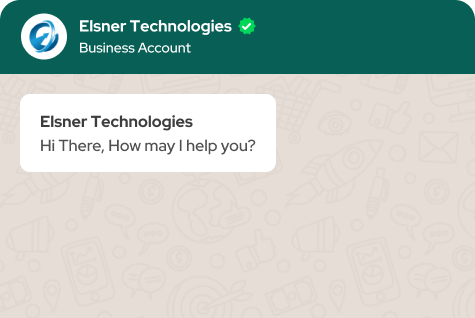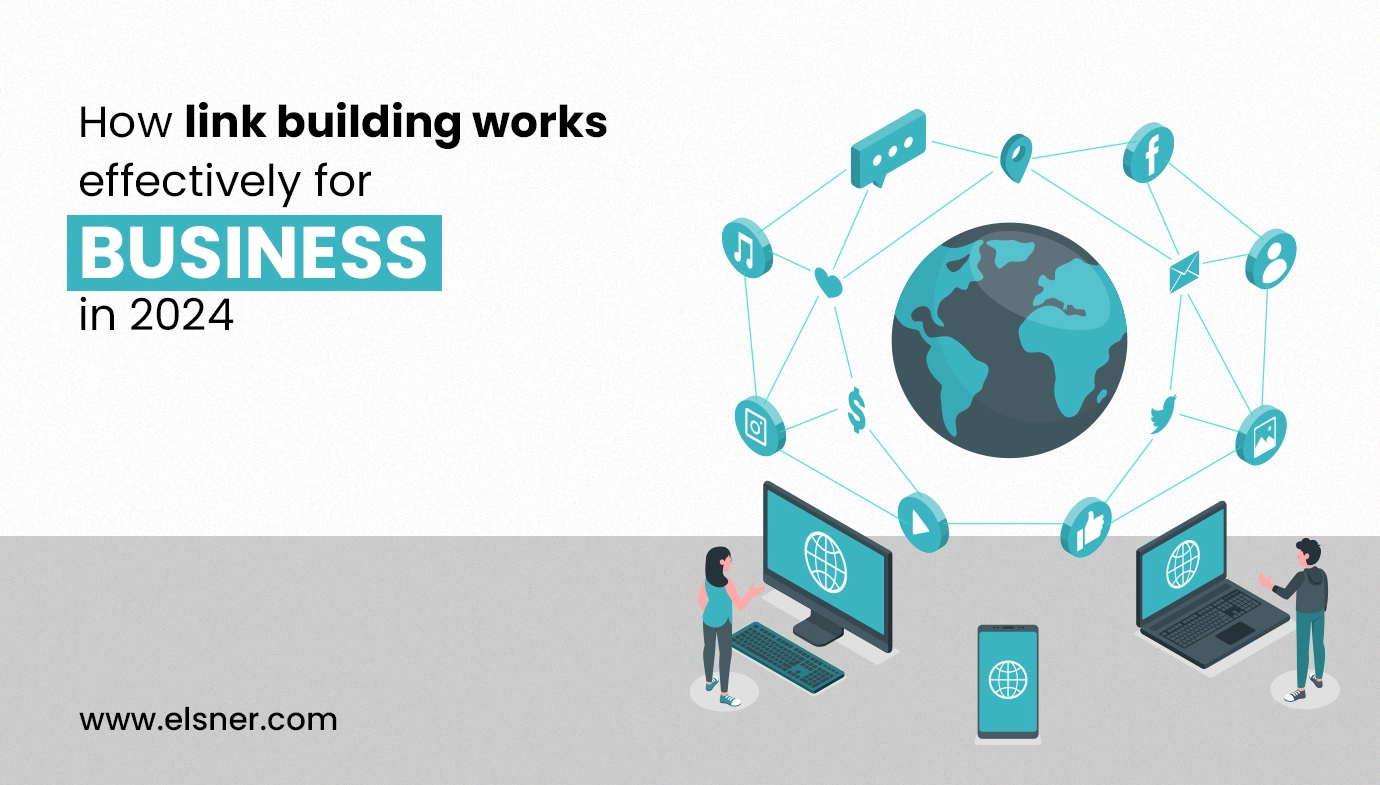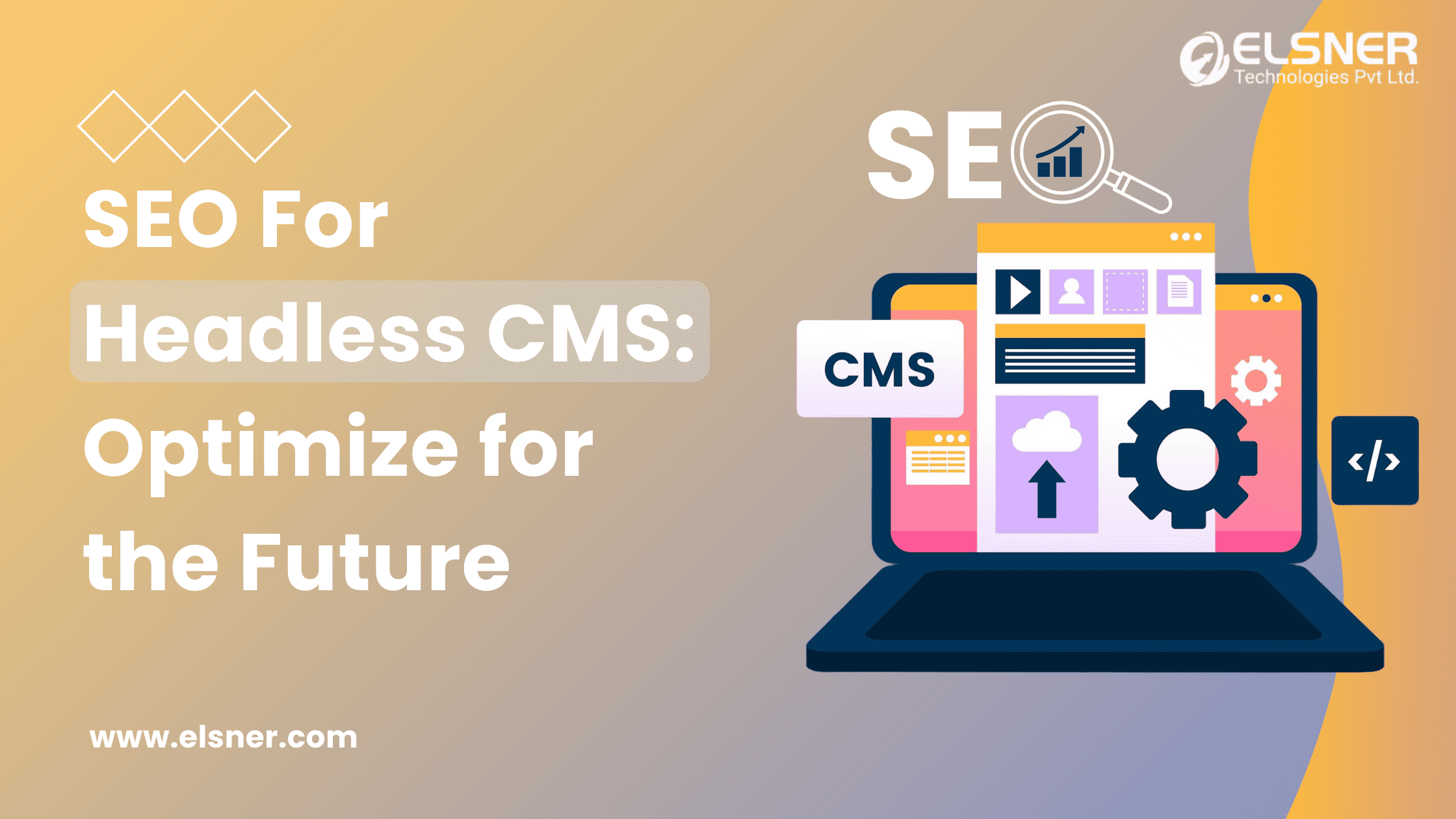- What is Link Building, and Why is it Important?
- How Does Link Building Work for Businesses?
- What Makes a Good Backlink?
- Types Of Link Building
- Links you Don’t Ask for (Passive Link-Building)
- Links You Ask for (Proactive Link Building)
- User-Generated Links
- Top 5 Best Link-Building Strategies to Follow
- 1. Outreach
- 2. Creating Linkable Assets
- 3. Unlinked Brand Mentions
- 4. Become a Source
- 5. Backlink Gap Analysis
- Wrapping Up
- FAQs
- How long do organic link-building strategies take to deliver results?
- What are the best types of backlinks for boosting organic search ranking?
- How does link building help SEO in 2025?
- Are there risks in link building if not done properly?
- Which tools help identify backlink gaps and monitor organic traffic?
Almost every digital business owner understands the importance of SEO and is actively investing in the same. However, this has made the professional SEO space competitive, especially for new businesses. Without unique strategies, you cannot expect to survive, let alone flourish in this competitive world.
So, what’s the solution?
Link building!
Link building is an impactful SEO strategy that can supercharge your SEO efforts.
But how does it work? Read along to find out.
This blog will discuss what link building is and why it is essential for businesses. In addition to the above, we’ll list some effective link-building strategies that actually work in 2025.
What is Link Building, and Why is it Important?
Link building is an SEO technique for getting other websites to link back to your website. And the link that redirects users from the external websites to your own is called a backlink.
But why should marketers and business owners be interested in link-building?
Google’s algorithms are pretty complex to understand and are constantly evolving. However, one thing that every search engine considers when it comes to ranking websites for specific keywords is backlinks.
Links are like a “vote of confidence” for your website in Google’s eyes. The more links you have, the more useful, credible, and valuable your website becomes for Google. All this translates to higher SEO ranking, better search visibility, organic traffic, and conversion.
So, if you wish your website to rank higher in the SERPs, you need an in-house team or hire a top link building service provider.
Please Note. While having more links means higher SEO ranking, there are other factors at play, too. For instance, the trust and authority of the pages you’re getting links from, SEO optimization, anchor text of the links, etc.
How Does Link Building Work for Businesses?
Let’s understand this with the help of one of the most popular link-building strategies: Guest Posting.
Say you have a new website where you sell women’s makeup products. You regularly publish blogs, but you don’t get enough traction on your website. Now, you approach an extremely popular blogger whose target audience is similar to yours. And you request them to publish your guest post on their website that has a link back to your website.
Let’s suppose the website owner agrees, and you repeat the above process multiple times. When Google notices that your website is getting multiple links from high-authority websites, your credibility will increase. This will boost your organic search ranking for the relevant keywords.
In addition to getting better search ranking, building backlinks from multiple high-DA websites will also redirect high-quality readers to your website. And this way, your organic traffic and sales would grow.
That’s how link-building works for businesses in a nutshell.
Note. Guest posting is just one way you can build links. There are several other ways you’ll find later in the blog.
What Makes a Good Backlink?
When it comes to link building, you cannot get backlinks from just any website. There are several factors that make a backlink good or high quality that you need to know about. Only then can you make the most of link building. Here are the factors that make a good backlink:
Authority: Authority represents the overall quality of a webpage. The higher the authority, the better its backlink profile. You can use multiple metrics to determine the authority or quality of the webpage you’re getting the backlink from, including:
-
- Domain Authority (3rd party metric)
- PageRank by Google
- Domain Rating by Ahrefs
Relevance:
Let’s say you sell women’s beauty products, and you identify a high authority domain that talks about women’s fitness. While the DA is high, the content on their website won’t be relevant to what you post. This can negatively impact your ranking as Google considers “content relevance” as one of the factors to rank your website.
Placement: You cannot just place your link anywhere on the page and expect higher ranking and traffic. Link placement matters. For instance, in informational blogs, the links are usually placed in the beginning as readers are more likely to click the links that appear early in the blog. And in product review blogs, links placed at the bottom tend to perform better. This is because the readers usually focus on the review before taking action.
Also, never forcibly place links in your content. They should be added naturally. Otherwise, readers may not click them.
Anchor Text: Anchor text is what search engines and users use to determine what the linked page is about. If your anchor text is too generalized, users won’t click it. Also, using exact keywords for multiple backlinks can look manipulative to Google.
So, when choosing anchor text, make sure it is relevant and descriptive. If users can easily understand where the link will take them, they’ll be more likely to click.
Link Attributes (Nofollow, Follow, UGC, Sponsored): Link attributes are yet another factor that determines the quality of a backlink:
Nofollow Links: Nofollow tells search engines not to follow the outbound links. These are used when the site owner does not want any endorsement with the link.
Follow links: These are regular links without any attributes and imply endorsement. However, according to Google, while they offer brand recognition and traffic, nofollow links don’t pass any authority. So, ideally, you should look for do-follow links.
Sponsored Links: When a backlink has a sponsored attribute, it implies that someone paid for the placement of this link. While these links don’t transfer link equity they can help increase brand awareness and traffic.
UGC Links: The UGC attribute indicates the link has been placed in user-generated content. These links also don’t pass equity but offer additional context to search engines about the nature of the link.
Choosing the right attribute for links is extremely crucial when building links as every link signifies something different.
Types Of Link Building
You can divide link building based on the different types of links:
Links you Don’t Ask for (Passive Link-Building)
The majority of links you find online are the ones generated naturally using this method.
Take the example of any big brand, say Healthline: they produce high-quality medical content. As Healthline is a well-known brand and has a huge user base, readers want others to see the content. To make this possible, they either directly share it or link to Healthline’s content in their blogs or social media posts.
However, this type of link-building is quite tough as you need to create something so valuable that your readers want to link to it.
Links You Ask for (Proactive Link Building)
While these links carry the same value as above, you need to work for them. What it means is you need to proactively approach website owners or journalists and ask for backlinks. You need to create a quality content piece that your target audience will love, and website owners will want to link to.
User-Generated Links
These types of links majorly come from low-quality sources such as article directories, user profile pages, unmoderated blog comments, etc. And as these links are generated by users themselves, they carry less value and aren’t valued as much by Google. Common examples include fake news, comments, customer reviews, surveys, and more.
Top 5 Best Link-Building Strategies to Follow
1. Outreach
Outreaching is an effective link-building strategy wherein you approach others (generally, website owners) and ask for a backlink. Now, there are several outreach techniques you can implement for SEO link building services, including:
- The Skyscraper Technique: In this technique, you simply find the content that high authority websites are already linking to could be your competitors. You then create valuable and better-quality content, preferably on the same topic and approach the website owner to link to your content.
- The Moving Man Technique: This technique involves reaching out to websites that link back to outdated or inactive content and asking them to link to your new content. Usually, links become obsolete due to non-maintenance of the website, rebranding, change in product offering, etc.
You need to identify sites that are outdated, which you can do by using these search queries:
- “this website is no longer updated” [your industry keyword/article topic]
- “We have moved” [industry keyword/article topic]
- “service not available” + [your industry keyword/article topic]
- “page no longer exists” [your industry keyword/article topic]
- “This page is no longer updated” [your industry keyword/article topic]
Once you identify the sites, you can find the pages linking to them using SEMrush’s Backlinks Analytics Tool. After that, you can create new content and contact the domain owners with your request.
- Guest Posting: Guest posting is the process of publishing a content piece with a link back to your website on a high authority website. You need to identify high-authority websites in your niche, which you can do using these search terms:
-
- “Guest author” + “keyword”
- “Guest post” + “keyword”
- “write for us” + career + “women”
Once you identify the right guest posts, understand their content guidelines and create a quality content piece accordingly. You can then pitch your request via email and follow up as required to get your post published.
Pro Tip: Just finding websites that accept guest posts isn’t important. They should have quality content and high domain and page authority, among other factors.
2. Creating Linkable Assets
Linkable assets are content pieces that earn you backlinks naturally. Common examples of linkable assets include in-depth guides, whitepapers, infographics, and educational videos. To be able to create assets that your audience considers worthy of linking, you need to understand your audience’s needs.
To get started, you can leverage SEMrush’s Backlink Analytics Tool. Simply add the URLs of your competitors and hit analyze. After you see the results, you can click “Referring Domains.” This will give you a list of websites that link to your competitors.
Using the same tool, you can find the pages on your competitor’s site that are getting the greatest number of links by switching to “Indexed Pages”. This way, you can identify the type of content websites link to create similar or better-quality content and generate backlinks.
3. Unlinked Brand Mentions
Unlinked brand mentions are when other websites mention your brand name but don’t link back to your website. This link-building strategy works well, as most site owners are happy to add a link to the unlinked brand mention. All you’ve got to do is ask.
But how can you find unlinked brand mentions? Well, you can use tools like SEMrush’s Brand Monitoring to identify the unlinked brand mentions. Also, you can create Google Alerts wherein you’ll get notified whenever your brand is mentioned on the internet.
Pro Tip: In addition to generating backlinks, unlinked brand mentions can help you with brand awareness and reputation management.
For instance, when you successfully convert an unlinked brand mention into a linked one, new readers will be able to click and visit your website. Also, sometimes, users mention brands in negative reviews. However, by identifying such brand mentions, you can address negative reviews and manage your brand’s reputation.
4. Become a Source
Yet another great method for link-building is becoming a source for bloggers, journalists and reporters. HARO, or Help a Reporter Out (Now Connectively), is a service that connects people who need sources (journalists or writers) to individuals with links (you).
Basically, journalists, writers, and bloggers need expert opinions for their articles. If you can contribute to their article, there’s a good chance they’ll link to your website. All you’ve got to do is sign up on HARO and respond to relevant email queries with the required information.
HARO is a great source for backlinks as authoritative media outlets such as TIME, Mashable, The Wall Street Journal, and even The New York Times use this service.
Pro Tip: Often, journalists are on tight deadlines and get hundreds of pitches daily. Therefore, it’s important to respond quickly to email queries and that too with relevant information that demonstrates your credibility and expertise. Don’t forget, a short bio, and a link to your website, to further improve the chances of getting a reply to your pitch. Also, follow up politely a few times if required.
5. Backlink Gap Analysis
Backlink gap analysis is the process of identifying websites that link to your competitors’ pages but not to yours. This is an important strategy for backlink building. After all, if the websites are linking to your competitor’s pages, they’ll be happy to link to your pages as well. Your chances of getting links using his strategy become even better if you create better content than your competitors.
To get started, you can leverage SEMrush’s Backlink Gap tool. Simply add your competitor’s and your domain and click on “Find prospects”. You’ll get a list of all the domains that have linked to your competitors. You can also check the target URL, anchor text, authority score and other details.
Now, you need to export the list of websites and reach out to them with your content.
Wrapping Up
Now that you know how important link-building is and have the best link-building strategies, it’s time to include them in your professional SEO efforts for 2025. However, make sure to be consistent and patient, as link-building is a marathon and not a sprint.
Organic Link building requires a lot of time and effort. In case you want to enjoy the benefits but don’t have the resources, you should reach out to top guest post service providers or hire an SEO agency. They can help you acquire high-quality backlinks from authoritative sites in your niche, which can significantly boost your SEO efforts.
FAQs
How long do organic link-building strategies take to deliver results?
Organic link building is a long-term investment. Typically, it takes 3 to 12 months before you start noticing improvements in rankings and organic traffic. The timeline depends on factors such as the authority of the websites linking to you, the competitiveness of your niche, and how consistently you apply proven SEO link-building strategies.
What are the best types of backlinks for boosting organic search ranking?
The best SEO link-building strategy focuses on acquiring backlinks that are:
- From high-authority domains relevant to your industry
- Naturally placed within high-quality content
- Using descriptive, non-spammy anchor text
- Do-follow links rather than only no-follow ones
In short, quality always beats quantity when it comes to backlinks
How does link building help SEO in 2025?
Many business owners ask, “How does link building help SEO today?” The answer is simple: backlinks are still seen by Google as a vote of confidence. When credible sites link to yours, it signals to search engines that your content is trustworthy and valuable. As a result, your site’s authority improves, boosting rankings, organic traffic, and brand visibility.
Are there risks in link building if not done properly?
Yes. If you rely on spammy tactics, such as link farms, paid link exchanges, or irrelevant directories, your website may face Google penalties. To stay safe, stick to organic link-building strategies for SEO such as guest posting, digital PR, and outreach to authority sites. Following white-hat SEO link-building strategies ensures sustainable growth without risking your rankings.
Which tools help identify backlink gaps and monitor organic traffic?
Several SEO tools can support your link-building efforts:
- SEMrush Backlink Gap – to find domains linking to your competitors but not you.
- Ahrefs – to track lost/gained backlinks and anchor text distribution.
- Google Search Console – to monitor organic traffic trends.
- Moz Link Explorer – to analyze domain authority and link profiles.
Using these tools ensures you’re building links strategically, not blindly.

About Author
Harshal Shah - Founder & CEO of Elsner Technologies
Harshal is an accomplished leader with a vision for shaping the future of technology. His passion for innovation and commitment to delivering cutting-edge solutions has driven him to spearhead successful ventures. With a strong focus on growth and customer-centric strategies, Harshal continues to inspire and lead teams to achieve remarkable results.




